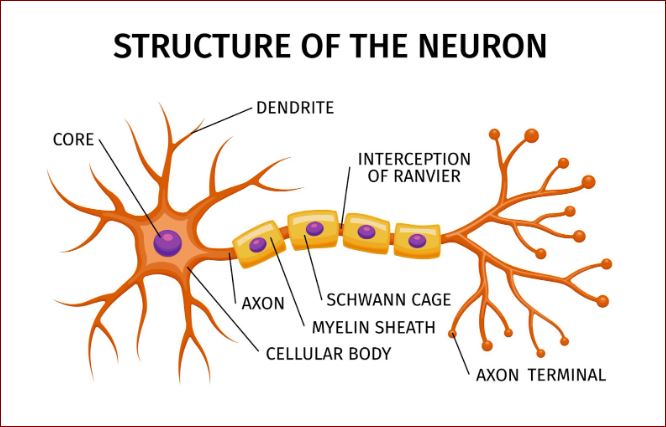The brain really is an incredible organ, and neurons are the vital link between, well, everything. The brain is anything but set in stone; how we think, feel, reason, and understand the world changes over time, all thanks to neuroplasticity.
Neuroplasticity and why it matters
The brain is probably the most complex part of the body; it governs everything we do, both consciously and without even realizing it. It also changes over time, developing new connections and getting rid of old ones to make sure it is working efficiently–this is the essence of neuroplasticity.
Understanding neuroplasticity may seem overwhelming at first, but a little knowledge can go a long way. That’s why neurophysiology is commonplace in biomedical sciences, from the online nurse practitioner program to radiography, physiology, and even optometry programs.
The science behind neuroplasticity: Neurons, synapses, and chemical signaling
To understand how neuroplasticity works, we need an idea of how neurons function and how they message one another–in simple terms because neuroscience needn’t be unnecessarily complicated.
The Neuron
A neuron is a specialized cell that sends and receives electrochemical signals all over the body. They have a cell body known as the soma; coming off the cell body are small branches–like a tree–called dendrites; they are involved in receiving and processing signals from other neurons. At the other end of the cell body is the axon, which, as you may have guessed, helps to send signals throughout the body to other neurons; these axons can extend over a meter and finish at the axon terminal.
The Synapse
Okay, so we have the basic anatomy of a neuron down… or do we? Those signals have traveled all the way down the axon to the terminal to fulfill an important job–not just fizzle out. The last point on the axon terminal is called the synapse, which is where neurons communicate with one another. The signals carried along axons trigger the release of neurotransmitters (like dopamine or gabba) into the synaptic cleft. This is the gap between the receiving dendrites of one neuron and the releasing synapse of another. That’s how you get a presynaptic neuron and a postsynaptic neuron.
The Messenger
The ‘signals’ that trigger communication between neurons are neurotransmitters. These chemical messengers cross the synaptic cleft, binding to receptors on the postsynaptic neuron and setting in motion a chain of events that leads to a neuron ‘firing’ (or not firing). This process is fundamental to everything from muscle movement to mood regulation, perfectly illustrating the intricate and dynamic nature of our brain’s communication network.

Neuroplasticity: Connecting the dots
Neuroplasticity is the brain’s incredible ability to reorganize itself by forming new neural connections throughout life. This happens through changes in the strength of synapses, the creation of new ones, or even the growth of new neurons in some areas. Everyday experiences, learning, and even injuries can spark these shifts. For instance, practicing a skill over and over strengthens the related neural pathways, making it second nature.
Neurotransmitters, like glutamate, are important players, carrying signals across the synaptic cleft and driving processes like long-term potentiation—a fancy term for how synapses get stronger with use, powering learning and memory. Neuroplasticity can also help the brain to bounce back from injuries by rewiring around damage. This constant adaptability keeps our brains flexible, resilient, and ready for whatever life throws our way.
Neuroplasticity and Brain Injury
Like any other organ, the brain is able to mend itself (to an extent) when it is damaged. Research has shown that after a traumatic brain injury (TBI), the brain can repair the damage using neuroplasticity in a few key steps:
- Immediate Response
Right after any TBI, there will be cell death; of course, the extent depends on the severity of the injury. For one to two days following this, the brain actually reduces the amount of inhibitory signals–while this may sound counterintuitive, it is thought that the decreased inhibition ‘unmasks’ new pathways that can be used as alternatives.
- Rebuilding Fase
After some time, the brain shifts from decreasing inhibition to increasing excitation, sending more signals to spark neuronal proliferation (new neuron growth). This can help form new synapses or repair damaged cells.
- Long-Term Remodelling
Now that you have a new brain–or at least some new connections–the body has to re-learn how to work in some ways. A process called axonal sprouting can occur where new axons ‘sprout’ to connect muscle fibers that lost their nerve supply in the TBI.
Your brain on time
Okay, so we now know that neurons communicate with one another in complex ways to trigger a physiological response. The strength of this response is determined by how many times a second the specific neuron is firing, and all 86 billion neurons in an adult control everything. But it didn’t start this way…
A child is born with around 100 million neurons and rapidly starts to form new synapses. By age two, these neuronal connections have reached their peak, and ‘neuronal pruning’ begins. Just like pruning a tree, the body starts to thin out the amount of synapses, removing unnecessary connections. This process can go on into your twenties.
As you age, there is evidence to suggest that cognitive decline in normal aging stems from specific synaptic changes in the prefrontal cortex and hippocampus rather than a loss of neurons.
The ever evolving brain
Hopefully, you can now appreciate just how much your brain, and nervous system as a whole, changes every second, week, month, and year. After massive neuronal growth in the first few years and billions of axons forming, we become more efficient by pruning down many of those connections.
If your brain is challenged to new limits, synapses form, and memories are formed; if your brain is damaged, it can repair itself and potentially even improve. All of these processes are so intricate and fascinating that they could, and have been the subject of thousands of PhDs. Hopefully, our knowledge only increases over time with new research happening every day on a truly cutting-edge frontier.
DISCLAIMER – “Views Expressed Disclaimer: This article is not intended to be a substitute for professional medical advice and should not be relied on as health or personal advice. Always seek the guidance of your doctor or other qualified health professional with any questions you may have regarding your health Views and opinions expressed are those of the authors and do not reflect the official position of any other author, agency, organization, employer or company, including NEO CYMED PUBLISHING LIMITED, which is the publishing company performing under the name Cyprus-Mail…more







Click here to change your cookie preferences